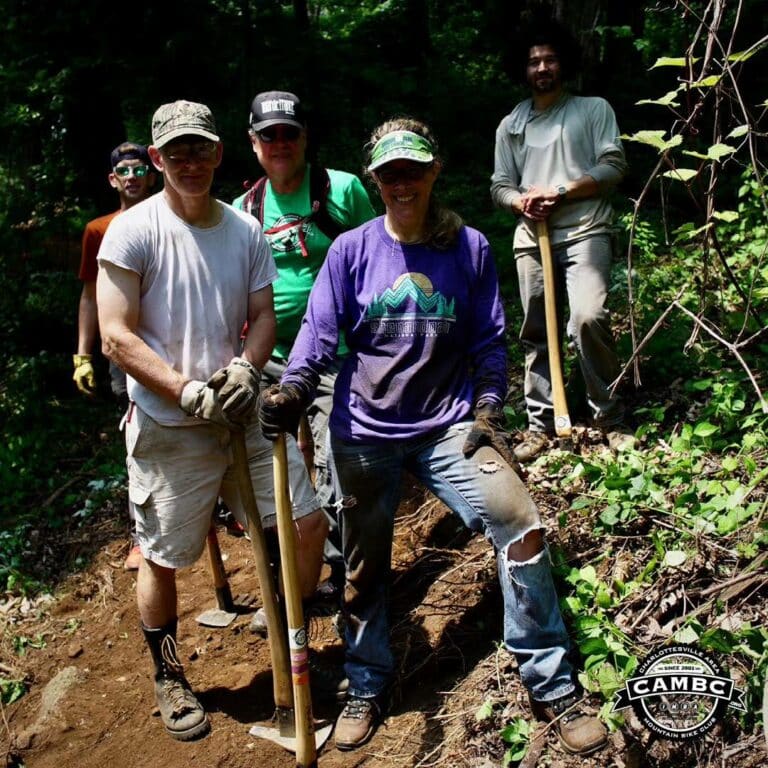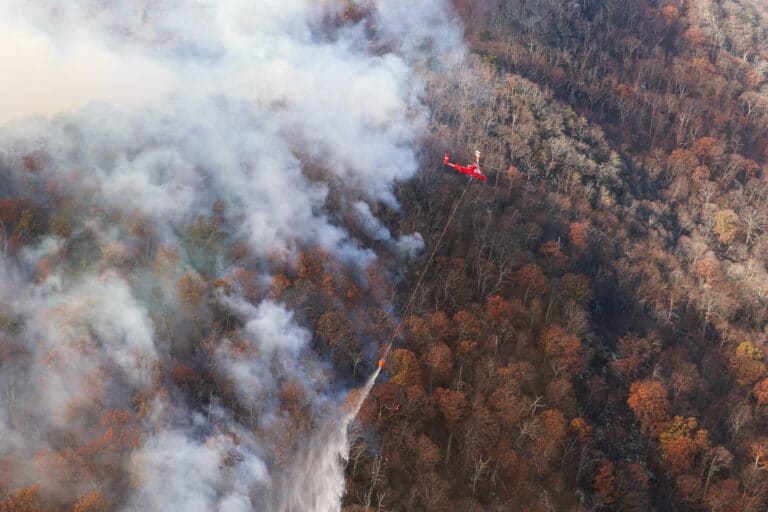Appalachian Trail Impact Study
Three million hikers trek sections of the A.T. every year, according to the Appalachian Trail Conservancy. How much impact does that have on the 2,189-mile footpath? A team of researchers from Virginia Tech is trying to find out. Currently two years into a three-year study, the university research crew is analyzing about 10 percent of the trail, assessing condition based on the effects of erosion and heavy foot traffic. “Even footprints can be problematic when there are millions of them,” said study leader Jeff Marion, a U.S. Geological Survey scientist, in the Roanoke Times.
Completed in 1937, the A.T. is now a cultural icon, romanticized in books and movies and very accessible to most East Coast cities. Congestion on parts of the trail is unlikely to recede. So Marion and his team will eventually recommend some solutions to help keep the trail sustainable, including potential relocations, connector trail additions, and strategic placement of campsites. These options could prevent more drastic measures like a limited-use permit system. “We want people to use the trail without putting up gates or putting limits on use,” Marion said.
New Bouldering Park Coming to West Virginia
In late spring it was announced that construction would begin this summer on the Tucker Boulder Park, a new climbing park in Davis, W.Va. The park, which should open in 2017, will include three custom-designed manufactured boulders with a variety of routes for all skill levels, including a small boulder for children. The new climbing spot, located in the southeast corner of the Davis Ball Park, is being modeled after the Teton Boulder Project in Jackson Hole, Wyoming. With a location near world-class mountain biking in the Monongahela National Forest and prime skiing in the Canaan Valley, Davis has long been known for easy access to many outdoor hot spots. The new bouldering park will offer an additional recreation option right in town.
New License Plate Honors Virginia Runner Killed by Drunk Driver
A new Virginia license plate features the silhouette of a woman running in front of the city of Richmond’s skyline. That woman is Meg Menzies, a 34-year-old mother of three who was killed while running in 2014. Menzies was with her husband on a training run for the Boston Marathon near her home in Hanover County, when she was struck and killed by a drunk driver in an SUV. Ever since, there’s been an outpouring of support locally around Richmond and from the running community at large to honor Menzies’s memory.
A social media campaign, Meg’s Miles, was started to raise awareness for runner safety, and the creation of the new license plate has a similar purpose. The plate design prominently lists the website Run4meg.com, so Menzies’s story can be shared. When Virginia Governor Terry McAuliffe signed the bill authorizing the plate, he told the Richmond Times-Dispatch: “It is a tragedy we had here in Virginia, but I do think with the issuance of this new license plate today, it will help save the lives of other runners.”
A Life Saving March to D.C.
A former Vietnam Veteran spent most of June walking from his home in the Triad area of North Carolina north to Washington, D.C., to raise awareness about veteran suicide. Terry Sharpe, 65, left Summerfield, N.C., on June 1, and, while supported in a following car by his friend and fellow veteran, Allen Brown, completed his 300-mile journey to the nation’s capital in 22 days. The timing of his walk was intentionally planned to match the number (22) of veterans who commit suicide every day. This isn’t the first time Sharpe, known as the Walking Marine, has made a long slog for a cause. He’s done the same 300-mile walk the previous two years in protest of American prisoners being held in Mexico and Iran. His adventures are documented at walkingmarine.com.
Gravedigger Race in Hungary
Gravedigger is certainly not the most desired profession—one that takes its toll both physically and mentally. But in June, a group of Hungarian gravediggers were given a chance to showcase their skills at the country’s first national grave digging competition, which took place at a cemetery in Debrecen, located about 140 miles east of Budapest. The event featured 18 two-man teams, who used shovels, rakes, and pickaxes to dig regulation-size (two feet, seven inches wide, six feet, six inches long, and five feet, three inches deep) graves that were judged on both speed of completion and overall look.








